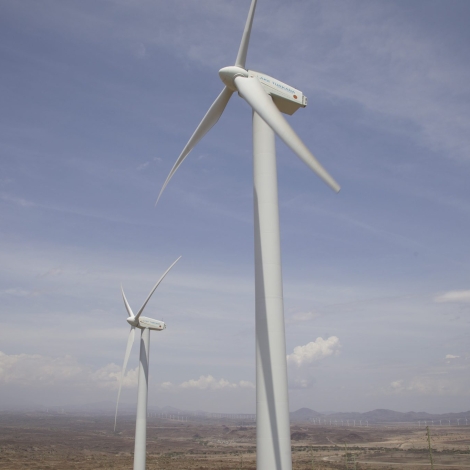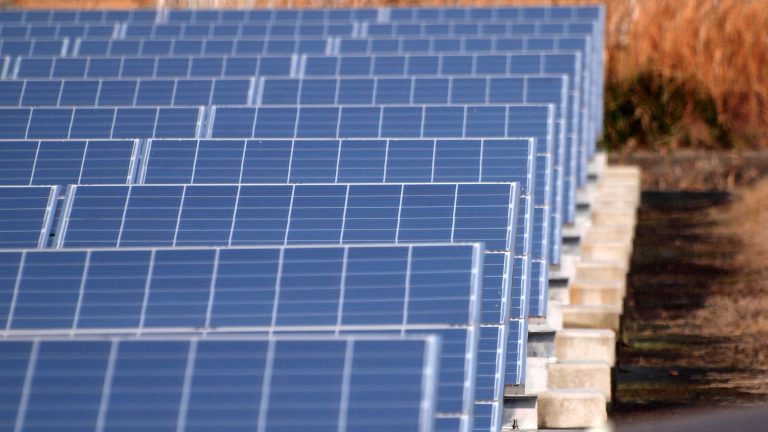Kenya broke ground on an ambitious project in 2016, a standard gauge railway running from the port city of Mombasa, through capital and commercial city of Nairobi, and terminating in the port city of Kisumu. The project in its entirety may never reach completion, however. The section between Mombasa and Nairobi is now running, but the goal to make it electric was shot down due to high energy demand, a luxury the country did not have.
With an installed capacity (grid-connected) of 1,429 MW, and rising demand that eclipses this figure, electrifying the train system would have drained off any power left. Acknowledging reality, Kenya went on with diesel-powered locomotives.
This is a scenario played across the African continent, where just a few countries enjoy a national grid. A report released in 2019 by the International Energy Agency (IEA) noted that economic and population growth in Africa, particularly in the continent’s burgeoning cities, will have profound implications for the energy sector, both regionally and globally.
“The idea of having one central source of energy is ludicrous. The future of energy in Africa is through a decentralized system, where users can have a control on the energy needed in a grid” — Albin Wilson, Opibus
Electricity demand in Africa today is 700 terawatt-hours, with the North African economies and South Africa accounting for more than 70 percent of the total, according to IEA.
It is, however, the other parts of Sub Sahara that have the highest registered and projected growth, and will be major consumers of energy in a decade.
A city like Kinshasa in the Democratic Republic of Congo, for example, is projected to have a population of at least 35 million people by 2050. This will not only need massive infrastructure supported by thoughtful engineering, but also huge sources of energy to run it.
Africa has relied on its rivers for electricity generation, with some countries exceeding 80 percent of their energy production through hydropower. Other energy sources on the continent include geothermal, coal, diesel, and other fossil fuels.
While hydropower in itself is considered a clean energy, shifting climatic conditions are making it unsustainable. IEA estimates an accumulative loss in generation output due to climate change of 130 terawatt-hours over the next century, which is equivalent to the current total annual generation output from all African hydropower plants.
While hydropower in itself is considered a clean energy, shifting climatic conditions are making it unsustainable.
With the demand for electricity rising by the day, governments have sought different means of production. The African Union Development Agency (AUDA-NEPAD) has been leading an initiative to explore the range of power sources available to Africa. Recently, the agency has engaged the International Renewable Energy Agency (IRENA) and the International Atomic Energy Agency (IAEA) as modelling partners for the development of the African Continental Power Systems Master Plan (CMP).
In a report dubbed Climate Impacts on African Hydropower, the agency analyzes different scenarios in which Africa may find itself in the next century due to climate change.
“Under the Below 2°C scenario, countries in the Congo and Zambezi basins are likely to see a decrease of over 6.5%, while the Nile basin countries experience an increase of over 2% between 2060‑99. In the Around 3°C scenario, the Congo and Zambezi basin countries may see a greater drop, over 7% on average, in hydropower capacity,” according to the report.
This has prompted continental discussions on the best way forward. Talks have included ideas for better power transmission in which countries with adequate power can share it at a fee. Kenya has recently completed a 1,068km-long power transmission line from Ethiopia, supplementing the country’s domestic needs with the outside source.
Africa’s biggest potential has remained in renewable energy, mainly solar and wind. However, these sources are largely untapped. Most initiatives are implemented by the private sector and donor agencies, rather than larger-scale government-led projects.
These multi-donor initiatives include the Facility for Energy Inclusion (FEI). The African Development Bank, the European Commission, KfW, the Clean Technology Fund, Norfund, and other investors have committed nearly $160 million to the facility aimed at catalyzing financial support for innovative energy access solutions.
These types of initiatives provide funding for organizations that would like to tap into the development of power in the continent. Kenya’s two major wind farms; Lake Turkana Wind Power (300MW) and Kipeto Energy (100MW) are private entities that are now selling their power to the national government.
It is not only policy makers who are pushing the discussions on the future of energy in Africa. In August 2021, engineers converged on a virtual meeting to look at ways they can contribute to a better energy flow in a sustainable way under the Institute of Electrical and Electronics Engineers.
PowerAfrica 2021 is a premier conference providing a forum for research scientists, engineers, and practitioners to present and discuss latest research findings, ideas, and emerging technologies and applications in the area of power systems integrations, business models, technological advances, policies, and regulatory frameworks for the African continent.
However, for Africa, a continent with lowest per capita connection to power, experts are quick to point that the shift from petroleum-based energy to renewables should not be so radical.
Mark Thurber, an associate Director of the Program on Energy and Sustainable Development, Stanford University and Todd Moss Founder and Executive Director of the Energy Growth Hub, writing for the World Economic Forum note that any future thinking of African energy should put gas in the equation.
“The United States, China, and large parts of Asia and Europe are all betting heavily on gas as a core component of their energy futures, with important volumes sourced from Africa as liquefied natural gas (LNG). Wind and solar have become much more competitive due to steep price reductions. However, African countries that are rapidly increasing renewable capacity are facing challenges managing intermittency. With currently available storage technologies, it is impossible for African countries to greatly expand power supply without complementary new investments in gas or other dependable backups.”
Mr. Moss and Mr. Thurber draw on the example of Kenya, which is already suffering from severe voltage instability at only about 15 percent of installed capacity from wind and solar.
Swedish company Opibus has been operating in Kenya for a few years by converting gasoline-powered cars to electric. The result cuts carbon emissions and saves on the costs of normal operations. Albin Wilson, head of marketing and strategy at Opibus, told E4C that as energy needs in Africa increase, there is a need to think on how to decentralize power grids.
“The idea of having one central source of energy is ludicrous. The future of energy in Africa is through a decentralized system, where users can have a control on the energy needed in a grid,” Mr. Wilson says.
With growing domestic and industrial demand for energy in Africa, there will be more and more projects like the Kenyan railway that will not be powered, concludes Wilson.
He observes that the cost of production of cleaner energy has been coming down, providing higher returns on investments. That, he says, will be the future of energy in Africa.
“Africa will need more power; it must be green and affordable,” Mr. Wilson says.
About the Author
Kimani Chege is the 2021 Editorial Fellow at Engineering for Change, a freelance journalist and a media trainer with DW Akademie, a branch of the German broadcaster Dutche Welle (DW), where he trains radio stations on financial management, new revenue streams and other topics. Previously, he was the coordinator of a science journalists association in Kenya.

